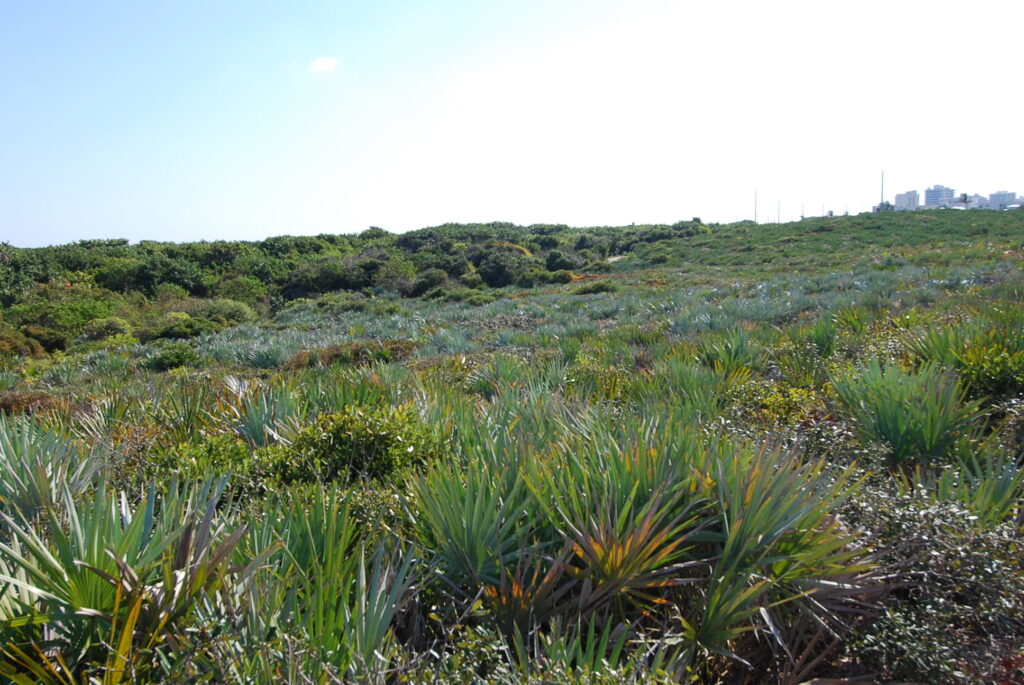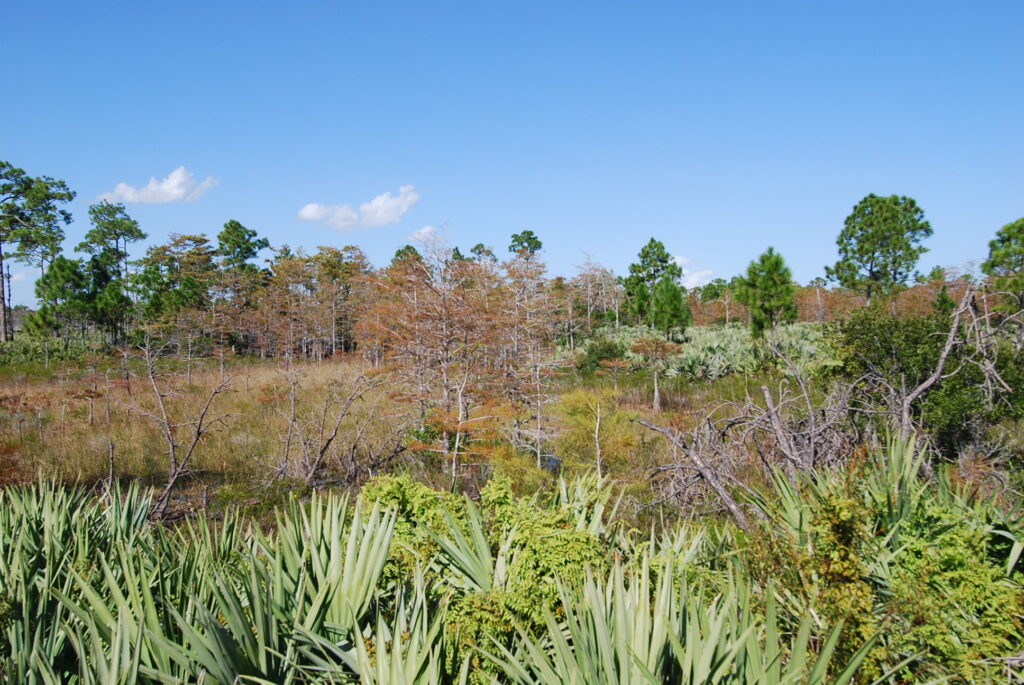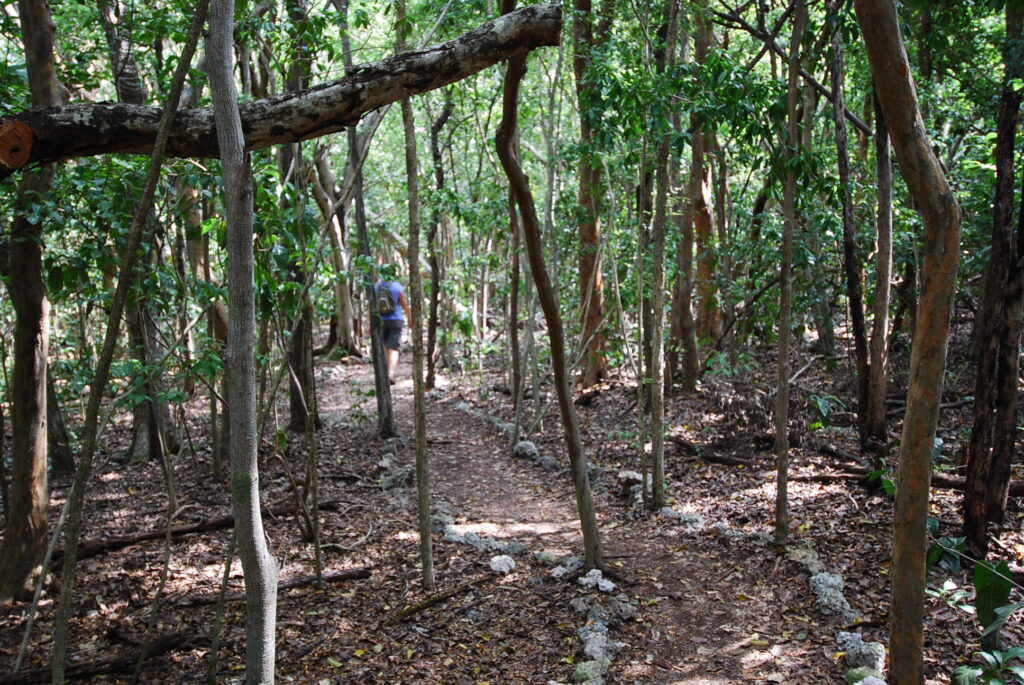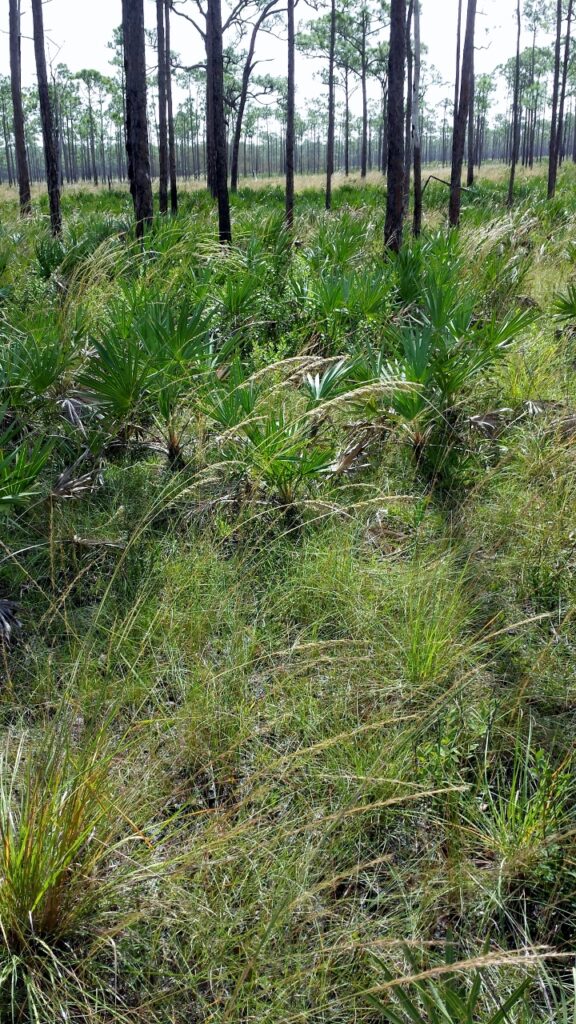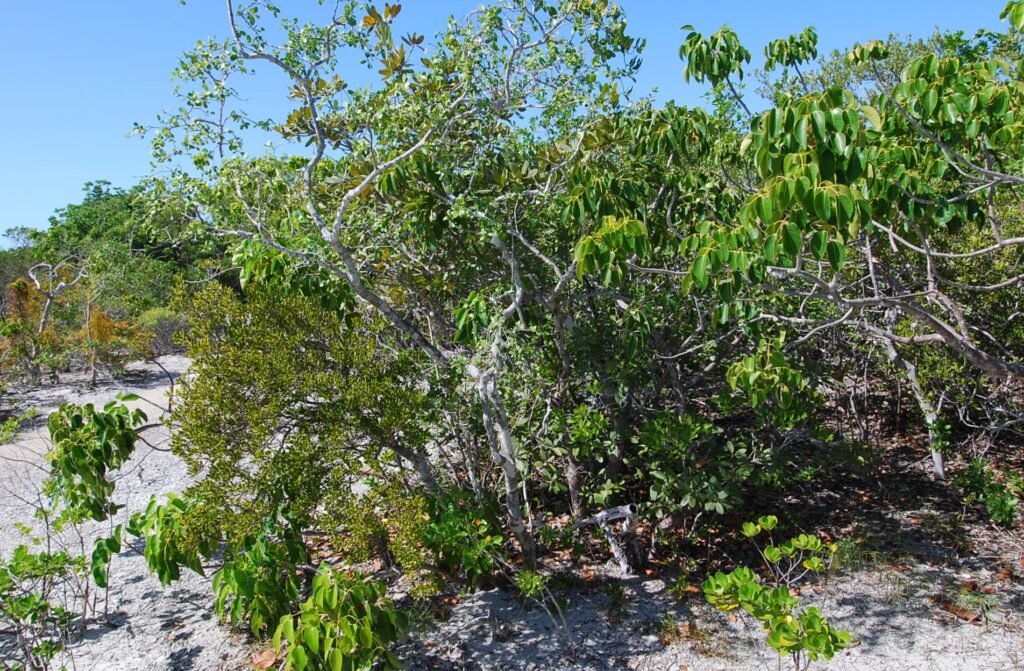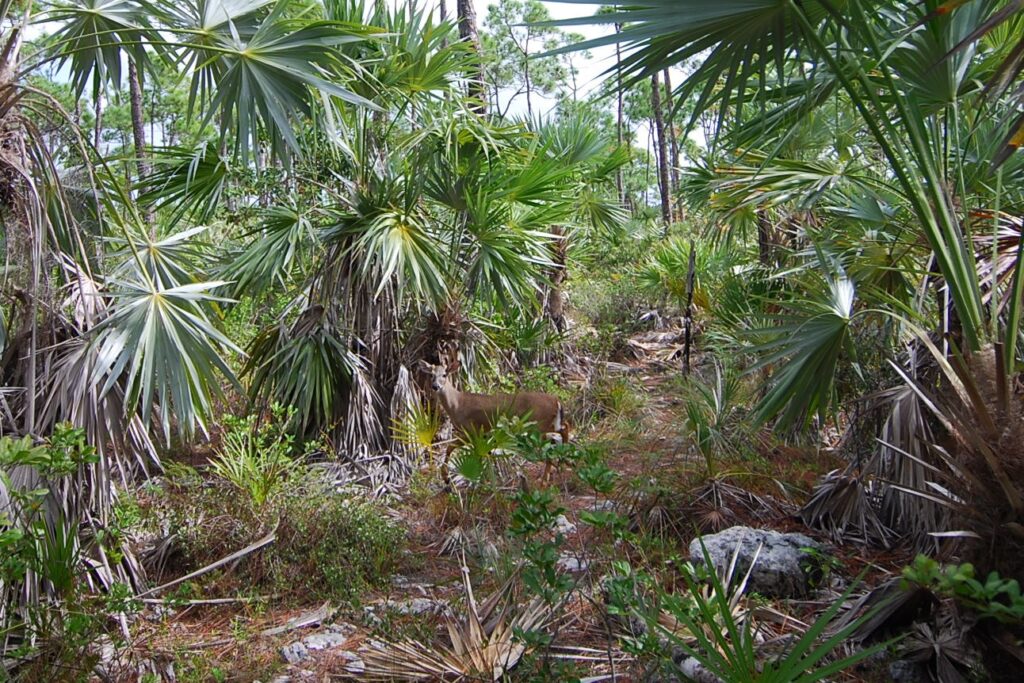High winds from the ocean nearby sweeping over the Juno Hills Scrub have sheered the vegetation down to just a few feet. This is a unique mix of scrub blending into coastal hammock to the left.
The top of the hill contains Saw Palmetto, Saffron Plum, Hog Plum, various scrub oaks, Scrub Palmetto, Scrub Redbay, Beach Cocoplum and wildflowers and grasses. As you head east to the left, coastal species are added.
These include Necklace Pod, Hercules Club, Wild Lime, Spanish Stopper, Snowberry, Wild coffee, Marlberry, Sea Grape, Blolly, Myrsine, Pineland Croton and others.
For purists like me, this verifies that mixing some of these plants makes sense. Some crossover occurs naturally, such as Saw Palmetto in both habitats, yet Seagrape should stay in the coastal grouping because it crowds out the smaller scrub plants.
This is my favorite picture which includes several natural areas coming together. Here you can see the coarse texture of Saw Palmetto, the medium texture of Slash Pine and the finer textures of Pond Cypress, St. Johns Wort and other wildflowers, sedges and grasses.
The fine texture of Pond Cypress gives the illusion of distance while the Saw Palmetto provides an explosion of form with an outstanding blue color. This can be achieved on a small scale as well such as in retention ponds, lakes and moist areas of the yard.
Too bad more of our lakes and yucky retention ponds aren’t bordered by these beautiful plants. Even our canal banks could be landscaped this way with some creative thinking.
The European Climbing Fern in the front was impossible to avoid.
The upper keys are packed with closely spaces trees with a wide variety of shrubs and groundcovers. When only a few feet apart, trees like the Gumbo Limbo, Wild Tamarind, Poisonwood, Pigeon Plum, Willow Bustic and Soldierwood develop straight trunks.
A group of Wild Tamarind, with their white bark and straight trunks, creates a mood similar to a grove of White Birch in Maine. The peeling bark of Gumbo Limbo and other mentioned trees creates a fascinating effect. You may notice that the larger trees are spaced 10 to 30 feet apart and will eventually dominate as the smaller ones are shaded out.
The Everglades Rocklands have soils composed of decayed leaves and broken down coral rock over ancient coral. The soil is acidic due to the organic matter, even though the coral rock is alkaline calcium.
This habitat is dominated by fire adapted Dade County Pine and numerous species of shrubs, ferns, wildflowers and grasses. Without fire, this would progress into a subtropical hammock composed of Gumbo Limbo, Mastic, Wild Tamarind and others.
Different species flower and seed throughout the year with the most colorful times during the summer rainy season and fall season of flowering and seeding grasses. The Lopsided Indiangrass shown in this picture flowers in September which is a great time to see other grasses and wildflowers blooming and seeding as well.
The tall tree in the center is Blolly with a Joewood to its left and broad leaved Poisonwood around it. These plants are surrounded by salt wind and water, nutrient poor soils and harsh sunlight. Hurricanes and violent storms beat these plants into twisted shapes that are truly beautiful to the trained eye.
Although a salt water bay surrounds this island, fresh water is trapped underground in the center. Short periods of salt water flooding are tolerated, yet fresh water is available most of the time.
If you would like a bonsai themed garden, combine these naturally occurring plants. There are also Black Torch, Wild Dilly, Bay Cedar, Key Lily, Locust Berry and Blackbead within this habitat.
A Key Deer in Big Pine Key that walked into the picture without my knowing. It is surrounded by Slash Pine, Key Thatch and Silver Palms, Coontie, Myrsine, Locustberry, Pride of Big Pine and other Rockland species.
I saw this darling daring deer when I looked up after taking a picture of the palms. Thinking she had walked in after my shot I tried, and thought I failed, to take her picture as she walked off. I was really disappointed until, while editing, I discovered that she had walked into the first shot without my knowing.
These Rocklands of the Keys and Everglades are full of many species of plants, insects and animals. These are our rock gardens where natural bonsai occur, including the Key Deer, and are some of the most beautiful and interesting places in the U.S.
